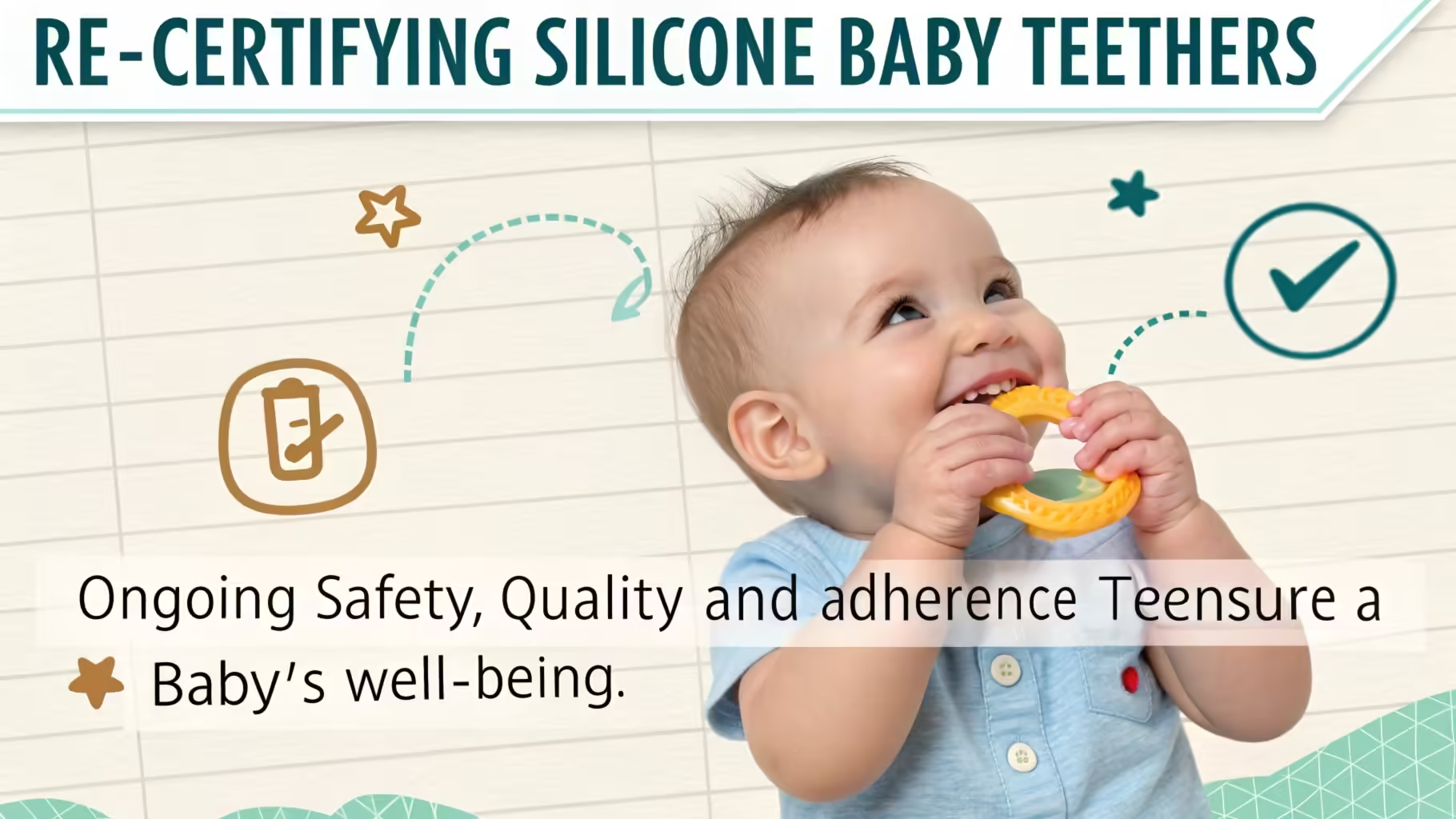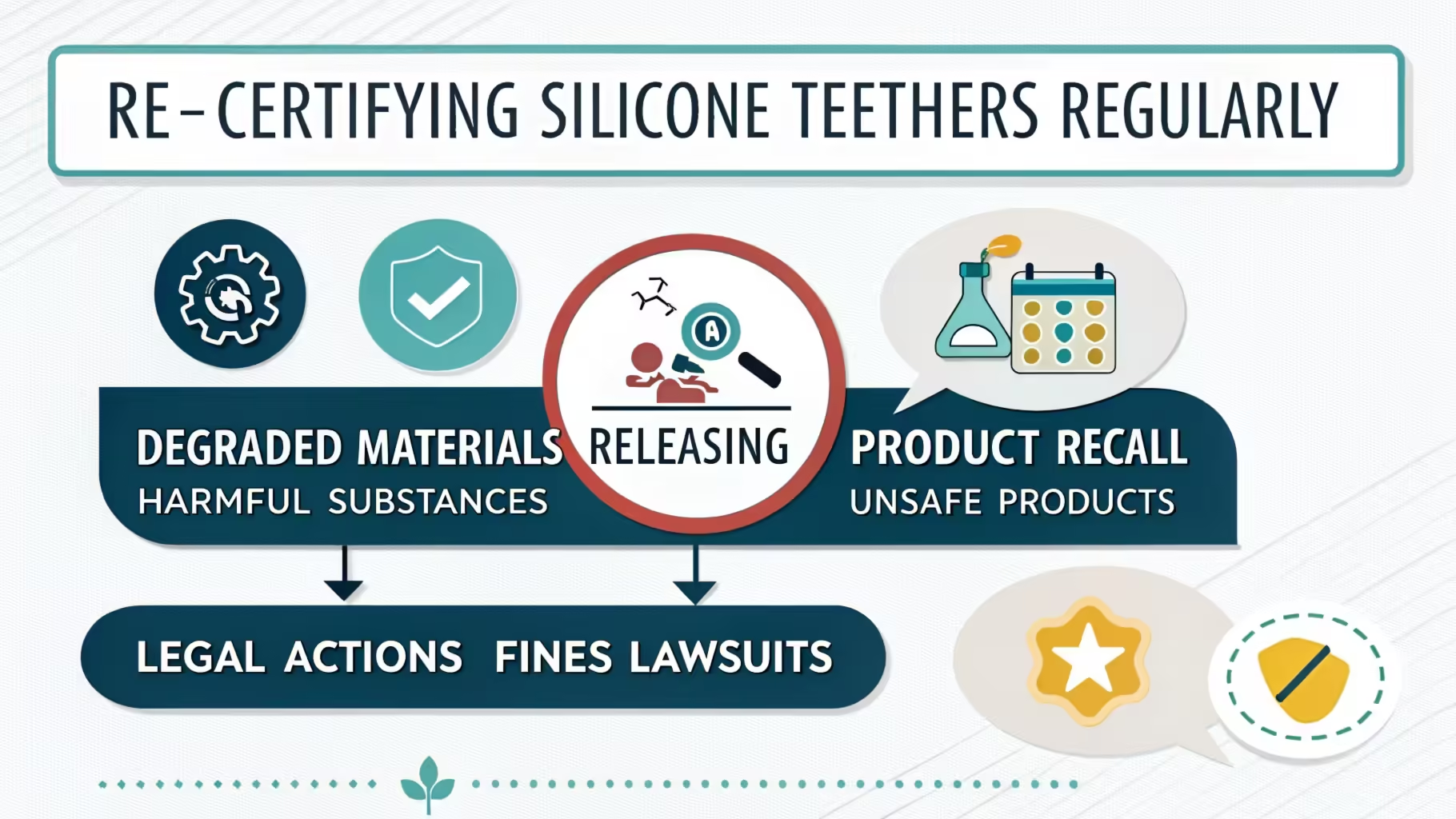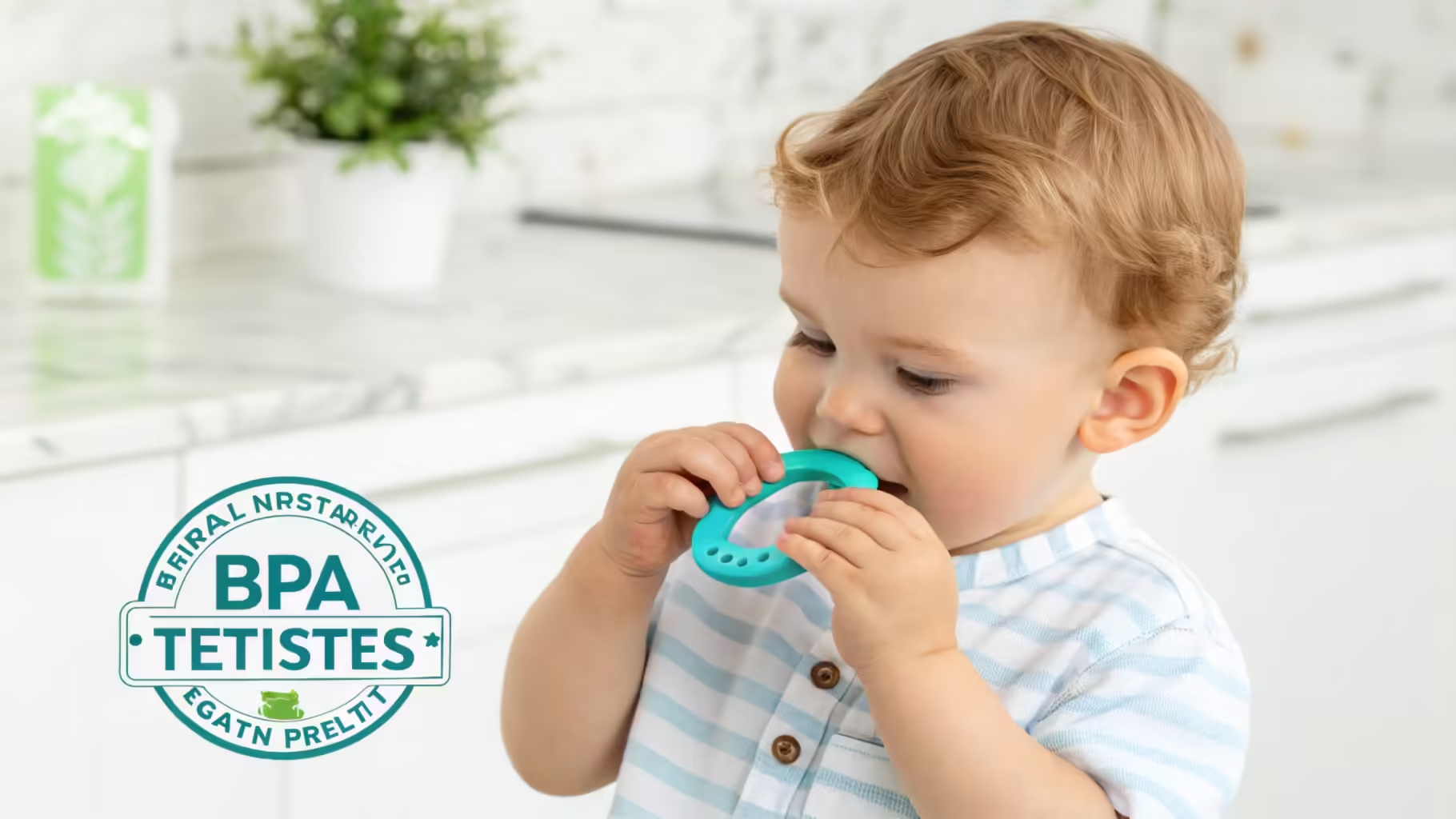
Ensuring the safety of your baby's teething toys is paramount. How crucial is it to regularly re-certify silicone baby teethers?
Regular re-certification of silicone baby teethers guarantees ongoing safety, compliance with evolving standards, and maintains product quality for your baby's well-being, as outlined in safety certification for silicone baby teethers1.
I remember the time I overlooked re-certifying a batch of teethers, only to face unexpected safety concerns. This experience taught me the importance of staying updated with certification processes.
What are the consequences of not re-certifying silicone teethers regularly?
Neglecting regular re-certification can lead to serious safety and legal issues.
Failure to re-certify silicone teethers may result in compromised safety standards, potential health risks for babies, and legal repercussions for manufacturers. Learn more about risks of not re-certifying baby products2.

Potential Risks
- Health Hazards: Degradation of materials can release harmful substances. Read about what makes silicone safe for baby products3.
- Product Recalls: Unsafe products may need to be withdrawn from the market.
- Legal Actions: Non-compliance can lead to fines and lawsuits.
How do manufacturers ensure compliance with changing safety regulations?
Staying compliant requires proactive strategies and continuous monitoring.
Manufacturers stay compliant by regularly updating their knowledge of safety regulations, investing in training, and collaborating with certification bodies to meet new standards. Implementing ISO 9001 for baby product manufacturers4 is a key strategy.

Compliance Strategies
- Continuous Education: Keeping up-to-date with regulatory changes.
- Quality Management Systems: Implementing systems like ISO 9001 for consistent quality.
- Collaboration with Experts: Working with safety consultants and certification agencies.
What specific tests are involved in re-certifying silicone teethers?
Re-certification involves a series of rigorous tests to ensure safety and quality.
Key tests include chemical analysis, durability assessments, and safety evaluations to verify that silicone teethers meet current safety standards, such as ensuring BPA-free silicone products for babies5.

Essential Testing Procedures
- Chemical Analysis: Checks for harmful substances like BPA and phthalates.
- Durability Testing: Ensures teethers can withstand regular use without degrading.
- Safety Evaluations: Assess for choking hazards, sharp edges, and overall design safety.
Conclusion
Regular re-certification of silicone teethers ensures they remain safe, durable, and compliant with evolving standards, protecting your baby’s well-being.
Footnotes
-
Buyers searching for certified baby teethers can learn how certifications ensure safety and meet regulatory standards. ↩
-
Highlights the potential financial and reputational impact of neglecting re-certification, ensuring buyers make informed decisions. ↩
-
Explains why silicone is a preferred material for baby products, helping buyers understand its safety and benefits. ↩
-
Demonstrates how implementing ISO 9001 ensures quality consistency and builds buyer trust. ↩
-
Provides insights into why BPA-free silicone products are a safer option for baby-related products. ↩
